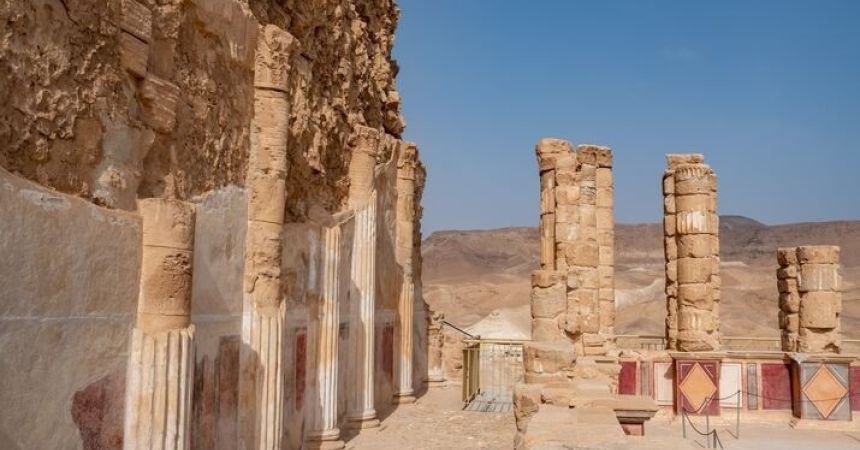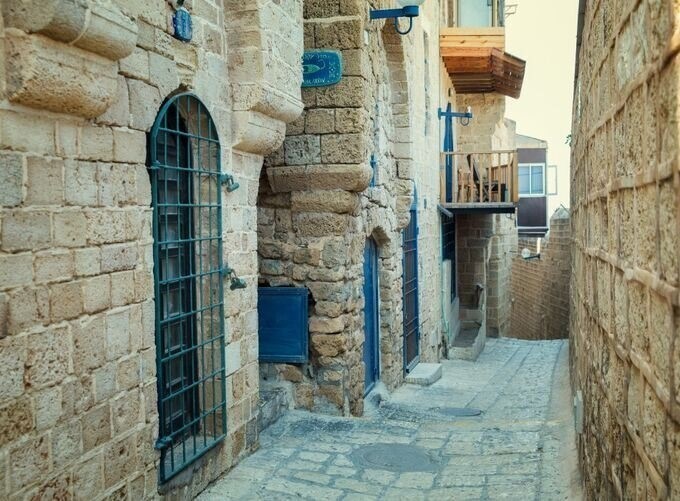
The Negev Desert: Israel’s Desert Oasis
The Negev Desert, occupying over half of Israel’s land area, is a vast and captivating region filled with natural wonders, rich history, and unique cultural experiences. From stunning geological formations to ancient archaeological sites and vibrant local communities, the Negev offers a diverse array of attractions for travelers. This comprehensive guide will take you through everything you need to know about exploring the Negev Desert, ensuring you make the most of your visit to Negev desert of Israel.
Discovering the Negev: Israel's Desert Adventure
Geography and Climate
The Negev Desert spans approximately 13,000 square kilometers, stretching from the southern edge of the Judean Desert down to the port city of Eilat on the Red Sea. The desert is divided into several regions: the northern Negev, the central Negev, the high plateau of Ramat HaNegev, and the southern Negev, which includes the Arava Valley.
The climate in the Negev is arid, with hot summers and mild winters. Temperatures can exceed 40°C (104°F) in the summer, while winter temperatures can drop to around 10°C (50°F) at night. Rainfall is sparse, averaging only 20-200 mm annually, depending on the area.
History and Significance
The Negev has been inhabited for thousands of years, with evidence of ancient civilizations dating back to the Bronze Age. It has been a crossroads of trade, culture, and conflict, with notable periods of Nabatean, Roman, Byzantine, and Ottoman influence. Today, the Negev is home to a mix of Bedouin communities, agricultural settlements, and modern cities, reflecting a blend of tradition and innovation.
Must-See Natural Attractions
Makhtesh Ramon (Ramon Crater)
Makhtesh Ramon is the world’s largest erosion crater, a geological wonder measuring 40 km in length and 10 km in width. The crater offers breathtaking views, unique rock formations, and a wealth of hiking trails. Highlights include:
- Mitzpe Ramon: A small town located on the edge of the crater, offering stunning viewpoints, visitor centers, and accommodations.
- Ramon Visitors Center: Provides information about the geology, history, and wildlife of the crater.
- Hiking Trails in Negev desert: From easy walks to challenging hikes, trails like the "Ramon Colorful Sands" and "Ein Saharonim" offer diverse landscapes and fascinating geological features.
Timna Park
Located north of Eilat, Timna Park is a sprawling nature reserve known for its dramatic landscapes, ancient copper mines, and unique rock formations. Key attractions include:
- Solomon's Pillars: Imposing sandstone columns named after King Solomon, with nearby ancient Egyptian rock carvings.
- Mushroom Rock: A naturally shaped mushroom-like rock formation.
- The Arches: Rock arches formed by natural erosion.
- Copper Mines: Some of the oldest copper mines in the world, dating back to ancient Egypt.
Ein Avdat National Park
Ein Avdat is a striking canyon in the Negev, characterized by its dramatic cliffs, waterfalls, and abundant wildlife. The park is perfect for hiking and offers several trails:
- Lower Ein Avdat: A relatively easy hike through the canyon, featuring a waterfall and pools.
- Upper Ein Avdat: A more challenging route with steep climbs and panoramic views of the surrounding desert.
The Red Canyon
The Red Canyon, located near Eilat, is a narrow sandstone gorge known for its vibrant red and purple hues. This family-friendly hike takes you through the winding canyon, with options for more adventurous climbing routes.
Exploring Israel's Historical and Cultural Landmarks
Avdat National Park
Avdat, a UNESCO World Heritage Site, is an ancient Nabatean city along the Incense Route. The site includes well-preserved ruins of temples, a Byzantine church, a Roman bathhouse, and a wine press. Avdat offers insight into the Nabatean civilization and their sophisticated agricultural techniques.
Shivta National Park
Shivta, another UNESCO World Heritage Site, is a Byzantine-era city known for its well-preserved architecture. Visitors can explore ancient churches, residential buildings, and agricultural installations. The site provides a glimpse into early Christian life in the Negev.
Mamshit National Park
Mamshit is one of the smallest but most well-preserved Nabatean cities. Highlights include the city gates, a bathhouse, and ancient mosaics. The annual Mamshit Camel Festival is a unique cultural experience, featuring camel races, Bedouin music, and traditional crafts.
The Bedouin Experience
The Negev is home to many Bedouin communities, known for their rich cultural heritage and hospitality. Visitors can experience traditional Bedouin life through:
- Bedouin Hospitality Tents: Enjoy traditional meals, storytelling, and music in a Bedouin tent.
- Camel Rides: Explore the desert landscape on camelback, guided by experienced Bedouin herders.
- Handicrafts: Purchase handmade Bedouin crafts, such as rugs, jewelry, and pottery.
Exploring Israel: Top Activities and Adventures
Hiking and Trekking
The Negev offers a variety of hiking and trekking opportunities, catering to all levels of experience. Popular trails include:
- Israel National Trail: A section of this long-distance trail runs through the Negev, offering diverse landscapes and challenging hikes.
- Ein Ovdat to Avdat: A scenic trail connecting the Ein Ovdat canyon to the ancient city of Avdat.
- Ramon Crater Rim Trail: A challenging hike along the rim of Makhtesh Ramon, with spectacular views of the crater.
Biking and Off-Roading
The Negev’s rugged terrain is ideal for biking and off-roading adventures:
- Mountain Biking: Trails around Makhtesh Ramon and Timna Park offer exhilarating rides through diverse landscapes.
- Jeep Tours: Guided jeep tours take you deep into the desert, exploring remote areas and hidden gems.
Stargazing
The Negev Desert’s clear skies and minimal light pollution make it an excellent destination for stargazing. Popular stargazing spots include:
- Ramon Crater: The high altitude and dark skies provide optimal conditions for viewing constellations and meteor showers.
- Mitzpe Ramon: The town hosts stargazing events and has several observatories for amateur astronomers.
Water Activities
While the Negev is predominantly arid, there are opportunities for water-based activities:
- Dead Sea: Float in the mineral-rich waters of the Dead Sea and enjoy its therapeutic mud baths.
- Ein Gedi: A lush oasis near the Dead Sea, offering natural springs, waterfalls, and hiking trails.
Practical Tips for Visiting the Negev Desert
Best Time to Visit
The best times to visit the Negev Desert are during the spring (March to May) and autumn (September to November) when temperatures are moderate and the weather is pleasant. Summer can be extremely hot, making outdoor activities challenging, while winter nights can be quite cold, especially in higher elevations.
What to Pack
When visiting the Negev, it’s essential to pack appropriately for the desert conditions:
- Clothing: Lightweight, breathable fabrics for daytime; warm layers for cool evenings.
- Footwear: Sturdy hiking boots or shoes for exploring rugged terrain.
- Sun Protection: Hat, sunglasses, sunscreen, and lip balm.
- Water: Ample supply of water for hydration; dehydration is a significant risk in the desert.
- First Aid Kit: Basic medical supplies for minor injuries and emergencies.
- Navigation Tools: Map, compass, or GPS device for navigating remote areas.

Safety Tips
Safety is paramount when exploring the Negev Desert:
- Stay Hydrated: Drink plenty of water and avoid strenuous activities during the hottest parts of the day.
- Plan Ahead: Inform someone of your travel plans and expected return time.
- Stay on Marked Trails: Stick to designated trails to avoid getting lost.
- Be Weather Aware: Check the weather forecast and avoid hiking during extreme heat or flash flood warnings.
Accommodations
The Negev offers a range of accommodation options, from luxury hotels to camping:
- Hotels and Guesthouses: Found in towns like Mitzpe Ramon, Sde Boker, and Eilat.
- Bedouin Camps: Traditional Bedouin-style tents and hospitality experiences.
- Camping: Numerous campsites and caravan parks are available, some with basic amenities.
Sustainable Travel and Ecotourism
Sustainable Practices
As tourism grows in the Negev, it’s crucial to practice sustainable and responsible travel:
- Leave No Trace: Carry out all trash and avoid disturbing natural habitats.
- Conserve Water: Use water sparingly, as it is a precious resource in the desert.
- Respect Local Communities: Engage with and support local Bedouin communities in a respectful and sustainable manner.
Ecotourism Initiatives
Several ecotourism initiatives in the Negev focus on conservation and sustainable development:
- Eco Lodges: Accommodations that use sustainable practices, such as solar power and water conservation.
- Wildlife Conservation: Projects aimed at protecting desert flora and fauna.
- Cultural Preservation: Initiatives that support and preserve Bedouin culture and traditions.
Israel's Culinary Delights: A Taste of Tradition
Traditional Bedouin Cuisine
Experience the flavors of traditional Bedouin cuisine, known for its simplicity and use of local ingredients:
- Mansaf: A traditional dish of lamb cooked in a sauce of fermented dried yogurt and served with rice or bulgur.
- Zarb: A Bedouin barbecue where meat and vegetables are cooked underground.
- Labneh: A tangy yogurt cheese served with olive oil and spices.
Local Markets and Food Festivals
Visit local markets and food festivals to sample regional specialties:
- Beer Sheva Market: Offers a variety of fresh produce, spices, and local delicacies.
- Eilat’s Red Sea Jazz Festival: Combines music with culinary events showcasing local and international cuisine.
Itineraries and Suggested Routes
3-Day Itinerary
Day 1: Mitzpe Ramon and Makhtesh Ramon
- Morning: Arrive in Mitzpe Ramon, visit the Ramon Visitors Center.
- Afternoon: Hike the Ramon Crater, exploring its unique geological formations.
- Evening: Stargazing at the crater rim.
Day 2: Avdat and Ein Avdat
- Morning: Visit Avdat National Park, exploring the ancient Nabatean ruins.
- Afternoon: Hike in Ein Avdat National Park, enjoying the waterfalls and wildlife.
- Evening: Stay in a local guesthouse or Bedouin camp.
Day 3: Timna Park and Eilat
- Morning: Drive to Timna Park, exploring Solomon's Pillars and ancient copper mines.
- Afternoon: Continue to Eilat, relax on the beach or snorkel in the Red Sea.
- Evening: Enjoy the vibrant nightlife of Eilat.
5-Day Itinerary
Day 1-3: Follow the 3-Day Itinerary
Day 4: Mamshit and Bedouin Experience
- Morning: Visit Mamshit National Park, exploring the Nabatean ruins and ancient mosaics.
- Afternoon: Engage in a Bedouin cultural experience, enjoying traditional hospitality and camel rides.
- Evening: Overnight in a Bedouin camp.
Day 5: The Red Canyon and Arava Valley
- Morning: Hike the Red Canyon, marveling at its vibrant sandstone formations.
- Afternoon: Explore the Arava Valley, visiting kibbutzim and agricultural projects.
- Evening: Return to Eilat or continue your journey north.
Discovering the Negev Desert: Nature, History, and Culture
The Negev Desert is a captivating destination that offers a unique blend of natural beauty, historical significance, and cultural richness. Whether you're an adventure seeker, history enthusiast, or cultural explorer, the Negev has something to offer everyone. By following this comprehensive guide, you can ensure a memorable and fulfilling experience in Israel's rugged gem. Embrace the adventure, respect the environment, and immerse yourself in the wonders of the Negev Desert.



